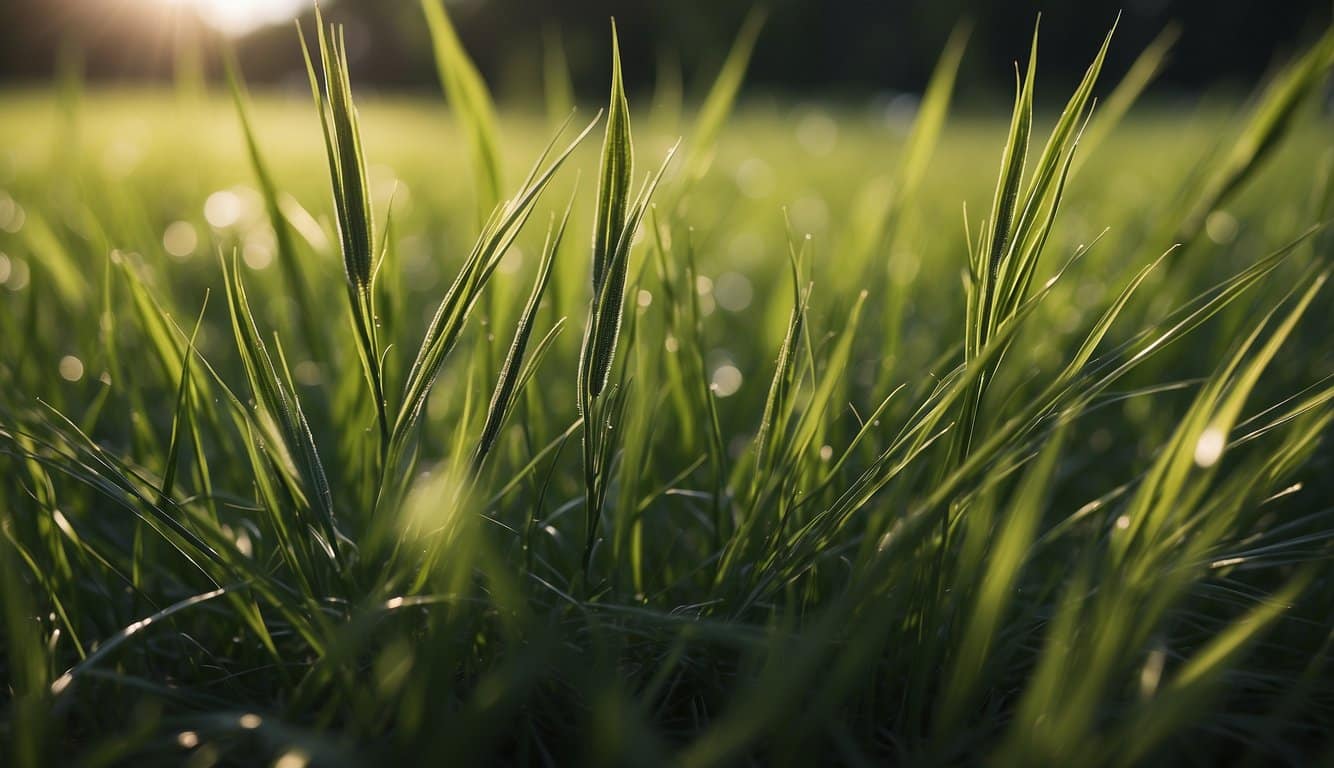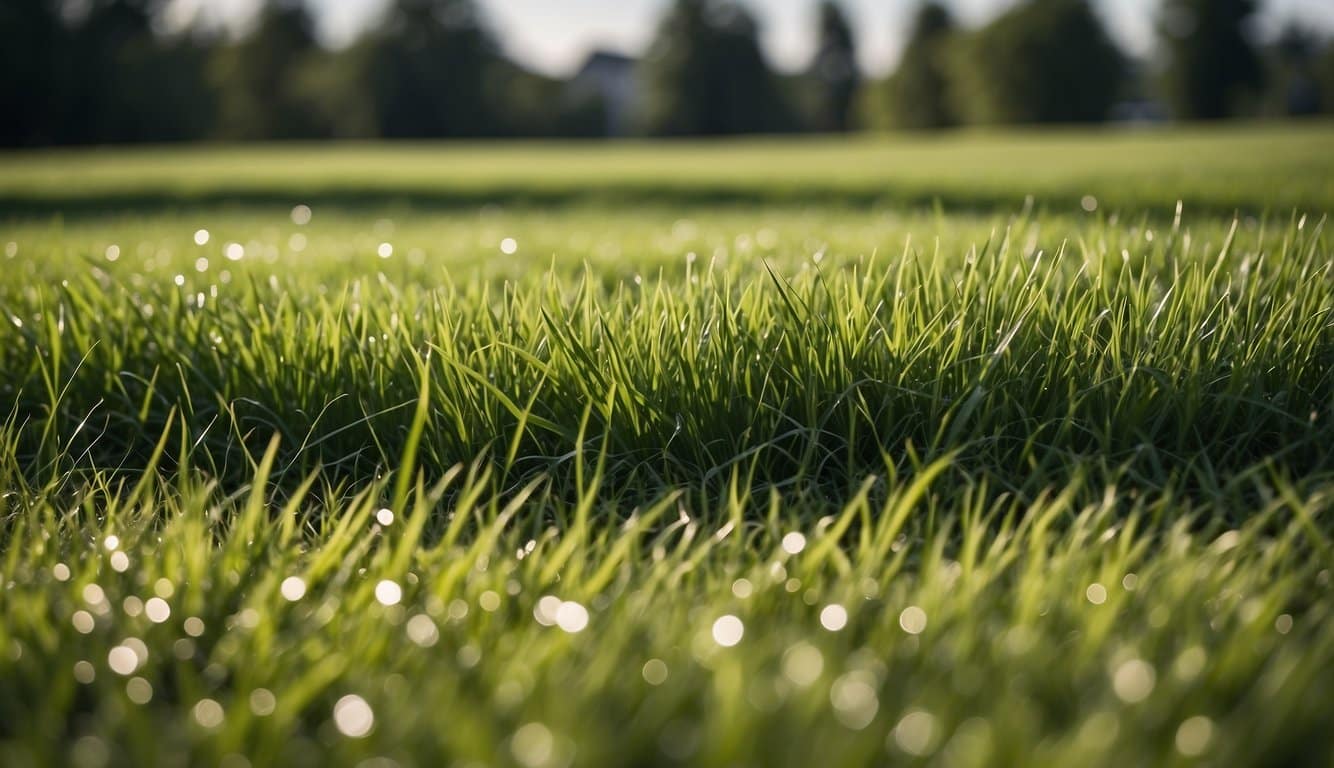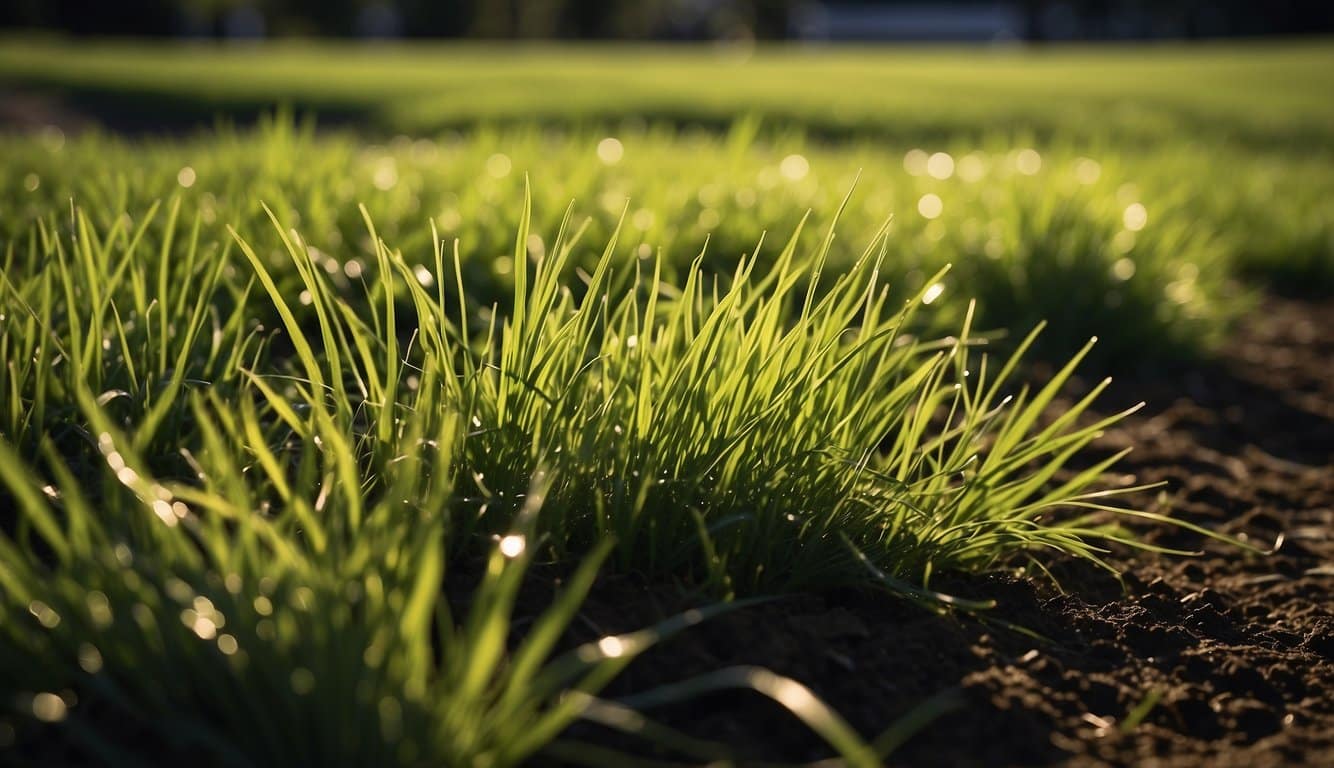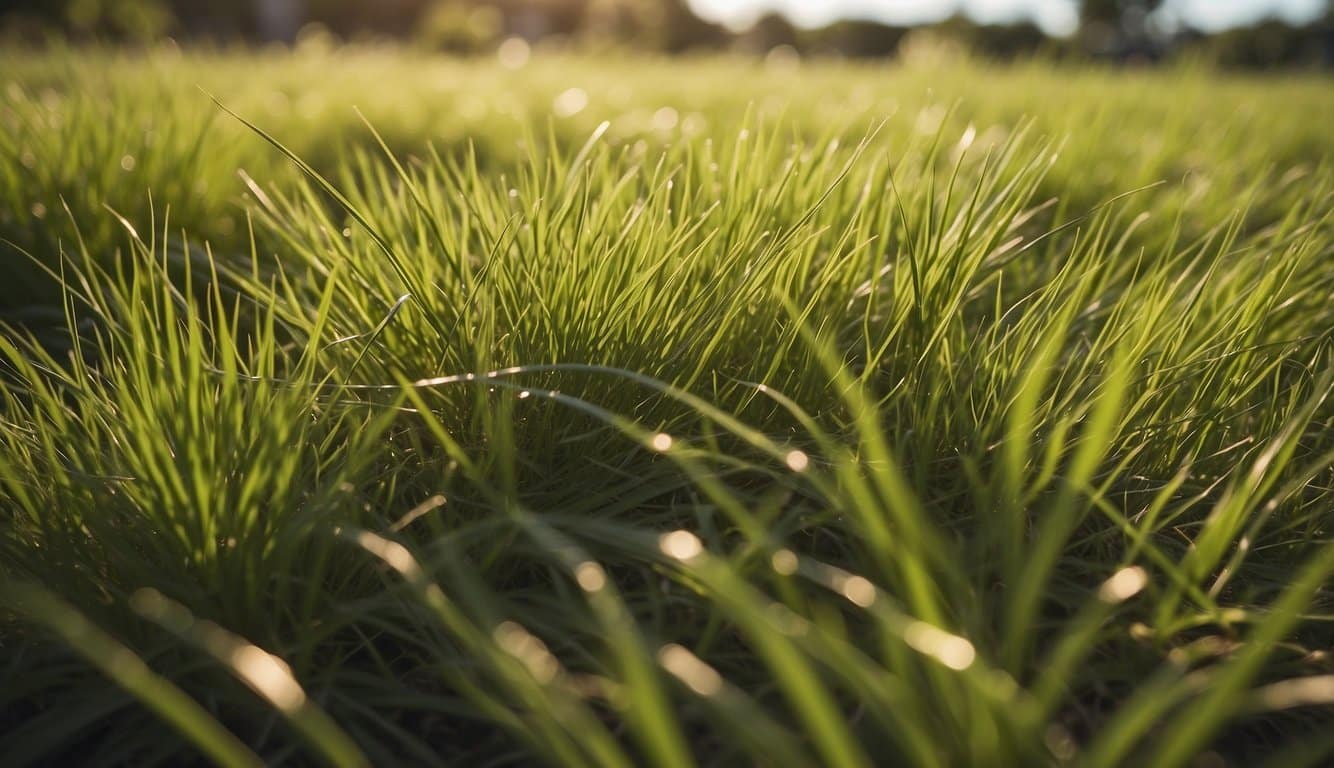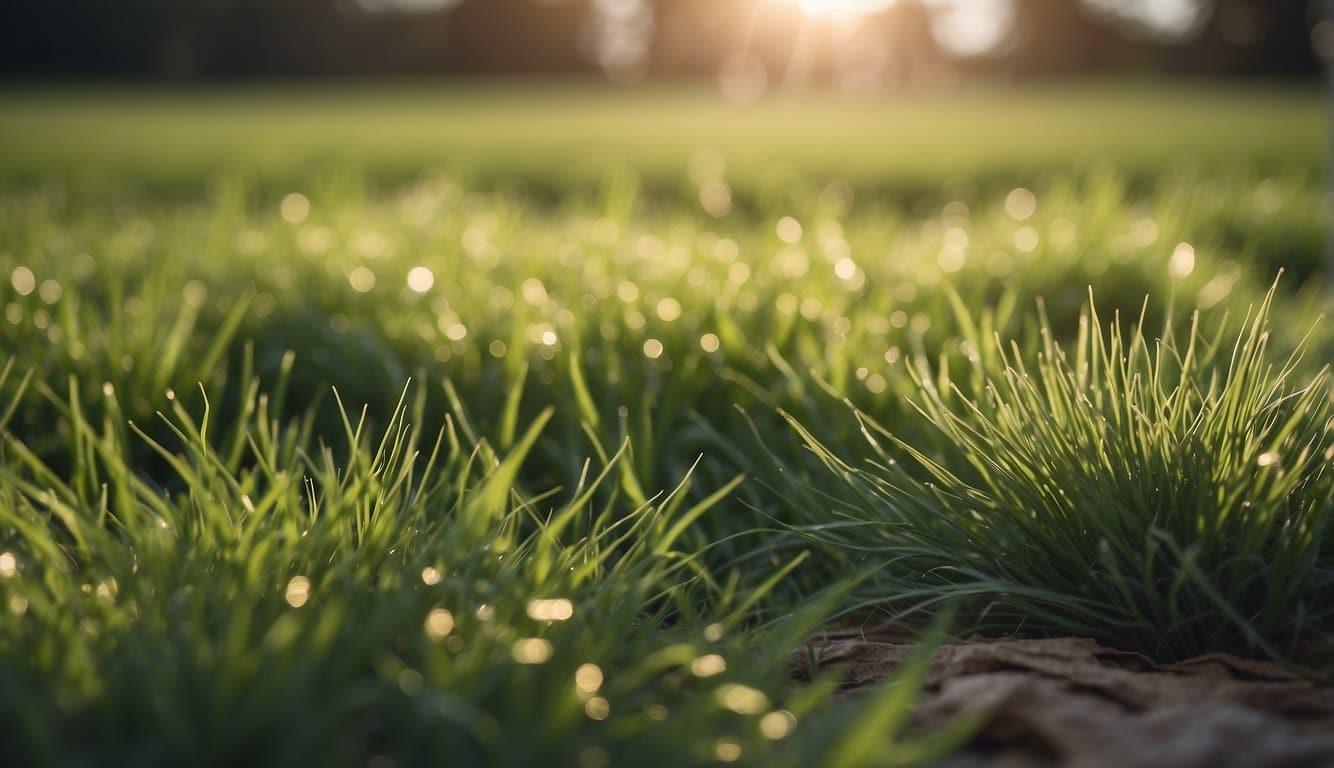| Characteristic | Bermuda Grass | Kentucky Bluegrass |
|---|---|---|
| Climate Preference | Thrives in warm, tropical, and subtropical climates. Prefers full sun. | Prefers cooler climates but needs at least 3-4 hours of direct sunlight daily. |
| Temperature Tolerance | Highly tolerant of heat, can withstand extreme summer temperatures. | Performs best in cooler temperatures and may struggle in high heat. |
| Cold Tolerance | Does not tolerate cold well and may go dormant in winter. | Good cold tolerance, can survive freezing temperatures with proper care. |
| Growth Habit | Spreads quickly through runners (stolons and rhizomes), creating a dense, aggressive turf. | Spreads via rhizomes to form a dense, carpet-like lawn. Slow to establish but fills in nicely over time. |
| Water Requirements | Moderate to low once established, drought-resistant. | Requires consistent moisture, especially during establishment and hot, dry periods. |
| Soil Preference | Adapts well to a variety of soils but prefers well-drained, fertile soil. | Prefers well-drained, fertile soil with a neutral to slightly acidic pH. |
| Maintenance Level | High maintenance due to rapid growth. Requires frequent mowing, dethatching, and may need more pest control. | Moderate maintenance. Requires regular mowing, fertilization, and occasional aeration. |
| Disease Resistance | Generally resistant to pests and diseases but can be susceptible to fungal diseases in overly wet conditions. | Fairly resistant to diseases but can be prone to certain fungal diseases and pests if not properly maintained. |
| Fertilization Needs | Requires frequent fertilization during the growing season for optimal performance. | Needs regular fertilization, but less frequently than Bermuda grass. |
| Shade Tolerance | Poor shade tolerance; needs full sun to thrive. | Moderate shade tolerance; can grow in partially shaded areas. |
| Wear Resistance | Excellent wear resistance, recovers quickly from damage. Ideal for high-traffic areas and sports fields. | Good wear resistance but not as robust as Bermuda grass. Suitable for moderate-traffic areas. |
| Aesthetic Appeal | Provides a fine-textured, dense green turf. Can turn brown in winter (dormancy). | Offers a lush, deep green color with a fine to medium texture. Maintains color well into the fall. |
Choosing the right type of grass for a lawn is critical to its overall health and appearance.
Bermuda grass and Kentucky bluegrass are two popular options, each with distinct attributes and care requirements.
Bermuda grass is a durable warm-season grass known for its ability to withstand heat and its adaptability to a variety of soil conditions. On the other hand, Kentucky bluegrass is a cool-season grass that thrives in northern climates, offering a soft texture and a vibrant bluish-green hue that many homeowners covet.
When it comes to creating the perfect turf, understanding the specific needs and characteristics of both Bermuda grass and Kentucky bluegrass is essential.
Bermuda grass typically requires full sun and has excellent tolerance for foot traffic, making it a common choice for sports fields and public areas in warmer regions.
Conversely, Kentucky bluegrass prefers cooler temperatures and can handle the cold, often recovering well from frost and snow.
Each variety of grass has its own cultivation and maintenance practices, response to pests and diseases, and suitability for different applications.
Key Takeaways
- Selection between Bermuda grass and Kentucky bluegrass depends on climate, maintenance preferences, and lawn use.
- Bermuda grass offers high durability and heat resistance, while Kentucky bluegrass is known for cold tolerance and a lush appearance.
- Proper maintenance and understanding their unique characteristics is essential for a healthy lawn.
Grass Types Characteristics
Selecting the right type of grass for a lawn depends on climate adaptability, maintenance levels, and aesthetic preferences.
Both Bermuda grass and Kentucky bluegrass have unique features that cater to different landscaping needs.
Bermuda Grass Features
- Adaptability: Bermuda grass thrives in warm climates and exhibits high drought tolerance.
- Growth Pattern: It has a vigorous growth habit, often classified as invasive due to its aggressive nature.
- Maintenance: It requires more frequent mowing due to its fast growth rate.
- Texture: The grass blades are typically coarser compared to Kentucky bluegrass.
Kentucky Bluegrass Features
- Climate Preference: Kentucky Bluegrass prefers cooler climates and moderate temperatures.
- Self-Repair: Known for its ability to self-repair, it maintains a dense growth.
- Lawn Feel: The soft, fine-bladed grass provides a lush, comfortable feel underfoot.
- Appearance: Offers a signature blue-green hue, giving it a luxurious appearance.
Cultivation and Maintenance
Choosing between Bermuda grass and Kentucky bluegrass largely depends on cultivation and maintenance practices suited to the plant’s needs as well as the grower’s climate and soil conditions.
Planting Requirements
Bermuda Grass:
- Ideal Planting Time: Late spring or early summer.
- Method: Sowing seeds, sprigs, or sods.
Kentucky Bluegrass:
- Ideal Planting Time: Fall or spring.
- Method: Sowing seeds or laying sod is preferred for establishment.
Soil and Climate Adaptability
Bermuda Grass:
- Soil Type: Adapts to a wide range, prefers well-drained soils.
- Climate: Thrives in hot, sunny climates.
Kentucky Bluegrass:
- Soil Type: Prefers fertile, well-drained soils with a pH between 6.0 and 7.0.
- Climate: Best in regions with cool, humid summers and cold winters.
Watering and Fertilization Needs
Bermuda Grass:
- Watering: Requires deep and infrequent watering; more drought-tolerant.
- Fertilization: Needs regular fertilizing during the growing season.
Kentucky Bluegrass:
- Watering: Requires consistent moisture, especially during establishment.
- Fertilization: Regular fertilization required; higher nitrogen levels preferred.
Usage and Applications
When choosing between Bermuda grass and Kentucky bluegrass, the intended application plays a crucial role in selection. Different grass types excel under varying conditions and usage scenarios.
Residential Lawns
For residential lawns, Kentucky bluegrass is often preferred for its soft texture and lush appearance, creating a comfortable and aesthetically pleasing outdoor space. It thrives in cooler climates where the summers are not excessively hot.
In contrast, Bermuda grass is a tough, heat-tolerant option suited for warmer regions, where it provides a durable, albeit coarser, turf that can withstand high foot traffic.
Sports Fields
When it comes to sports fields, Bermuda grass is highly favored for its resilience and capacity to recover quickly from wear. It’s ideal for fields in warmer climates that see continuous use, such as football and soccer fields.
For cooler regions, Kentucky bluegrass may be chosen for its ability to self-repair and its cushioning effect, though it often requires more recovery time between high-intensity sports events.
Erosion Control
In terms of erosion control, Bermuda grass has a robust root system that effectively stabilizes soil, reducing erosion in areas prone to wear such as slopes and banks. Its aggressive growth helps to cover ground quickly and firmly.
On the other hand, Kentucky bluegrass can also be utilized for erosion control in cooler climates, with its extensive root system that spreads quickly to create a dense mat.
Disease and Pest Resistance
When examining the resilience of Bermuda grass and Kentucky Bluegrass against diseases and pests, it’s important to note that both have distinct strengths and vulnerabilities.
Bermuda grass exhibits robust resistance to many pests and can thrive in challenging environments. However, it may be prone to infestation from pests like the southern chinch bug or diseases such as spring dead spot and leaf spot especially when stressed or grown in suboptimal conditions.
Kentucky Bluegrass is generally resistant to common lawn diseases, but it is still vulnerable to several pests and diseases:
- Dollar spot: causes small, circular, sunken patches
- Leaf spot: leads to purple to black spots on foliage
- Stripe smut: results in streaked and stunted growth
| Bermuda Grass | Kentucky Bluegrass |
|---|---|
| Spring dead spot | Dollar spot |
| Leaf spot | Leaf spot |
| Chinch bug infestations | Stripe smut |
To protect Bermuda grass, homeowners should ensure proper lawn care practices including appropriate fertilization, mowing, and irrigation.
Similarly, Kentucky Bluegrass benefits from regular monitoring and cultural practices aimed at preventing disease outbreak.
Frequently Asked Questions
When deciding between Bermuda grass and Kentucky bluegrass for a lawn, understanding their distinct characteristics is crucial. This FAQ section answers common queries to assist in making an informed choice tailored to specific lawn care needs and environmental conditions.
What are the primary differences between Bermuda grass and Kentucky bluegrass?
Bermuda grass is known for its high drought tolerance and its ability to thrive in warm climates. It is a warm-season grass with a dense, low-growing habit, making it wear-resistant and suited to high-traffic areas. Kentucky bluegrass, on the other hand, prefers cooler climates, has a lush, fine texture, and is renowned for its cold tolerance. They differ significantly in texture, growth patterns, and climate preferences.
Which is more suitable for hot climates, Bermuda grass or Kentucky bluegrass?
In hot climates, Bermuda grass outperforms Kentucky bluegrass due to its excellent heat tolerance and reduced water requirements. Bermuda grass stays robust and green in temperatures where Kentucky bluegrass might struggle to survive.
Can Bermuda grass and Kentucky bluegrass be grown together successfully?
While it is possible to grow Bermuda grass and Kentucky bluegrass together, it is generally not recommended due to their contrasting growth habits and environmental preferences. They may compete for resources, and the dominant grass type will likely overshadow the less suitable one for the prevailing climate.
How do the maintenance requirements differ between Bermuda grass and Kentucky bluegrass?
Bermuda grass requires frequent mowing during the growing season due to its rapid growth rate. It also needs less water than Kentucky bluegrass. In contrast, Kentucky bluegrass requires more irrigation and fertilization to maintain its dense and lush appearance, but it may need less mowing compared to Bermuda grass.
What are the water needs of Bermuda grass compared to Kentucky bluegrass?
Bermuda grass has lower water needs, making it more drought-resistant than Kentucky bluegrass. On the flip side, Kentucky bluegrass needs a consistent supply of moisture to keep its characteristic vibrant green color and may require additional watering during dry periods.
Which grass type is more resistant to disease: Bermuda grass or Kentucky bluegrass?
Bermuda grass generally has higher disease resistance than Kentucky bluegrass. This is especially true in its optimal warm and sunny environments.
Kentucky bluegrass can be susceptible to various diseases. This is particularly true if not properly cared for or if it’s growing in suboptimal conditions.
